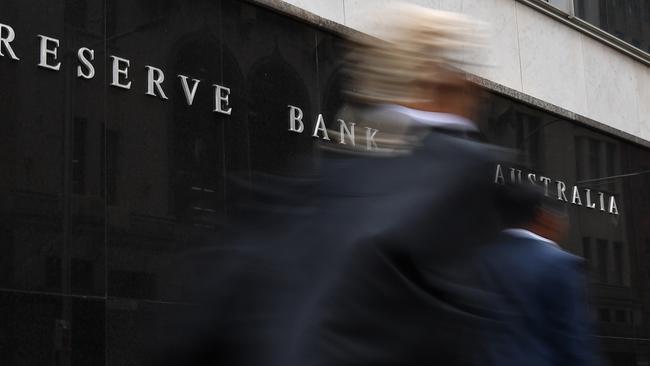Risks to financial stability from homes boom could be building: Reserve Bank
The Reserve Bank says risks to financial stability from the housing market may be growing, as it hinted at what measures may be needed.

The risk of excessive borrowing fuelling an unsustainable rise in the housing market that may threaten the nation’s economic outlook “could be building”, according to the Reserve Bank.
While regulators are “continually assessing” whether or not to address these risks via so-called “macroprudential tools”, the RBA again stopped short of signalling a need to do so.
But a leading investment bank found that so-called “liar loans” surged during the pandemic.
In a speech on the housing market and financial stability, RBA Assistant Governor Michelle Bullock described Australia’s property boom in the past year as part of a “bridge” of economic support built by monetary and fiscal policy support since the start of the pandemic.
“But with the increase in housing prices and housing debt, risks to financial stability could be building,” Ms Bullock said.
“Even though the banks have strong balance sheets and lending standards are being maintained, there is a risk that in this environment households will become increasingly indebted.
“A high level of debt could pose risks to the economy in the event of a shock to household incomes or a sharp decline in housing prices. It is these macrofinancial risks that warrant close watching.”
Australian banks are “very exposed” to the housing market as around 60 per cent of their loans are for housing and homes are commonly used as collateral for loans to small business.
She warned that if there were an economic shock that caused borrowers to be unable to service their debt and house prices fell sharply at the same time, banks would face losses, which if big enough could cause a snowballing effect if the banks then reduced their lending.
But stress tests by the RBA last year showed that even a very severe recession and substantial fall in property prices would still leave the banks with capital above their regulatory minimum.
Ms Bullock also warned that “over-exuberance” in household borrowing can hurt consumption.
Rapid price rises can see borrowers “overstretch their financial capacity” in order to obtain a new loan, making them more likely to reduce their consumption in response to a shock to their incomes.
And if rapid rises in house prices prove to be unsustainable they could lead to sharp declines in house prices and turnover in the housing market, hitting spending by a negative “wealth effect”.
While investor activity in the housing market is “nowhere near the levels it was in 2014”, Ms Bullock said it was “hard to judge in real time” if house prices were out of line with fundamentals.
“Nevertheless, when prices are rising very rapidly and there are expectations that this will continue, borrowers are more likely to overstretch their financial capacity in order to purchase property. We are therefore watching developments in housing markets and credit very closely.”
Still, while Ms Bullock said the evidence suggested “standards overall have been maintained” even with “very strong demand for housing”, a UBS survey found a surge in so-called “liar loans”.
The UBS Evidence Lab survey of 900 Australians who took out a mortgage in the last year suggests a “material deterioration of lending standards”, said UBS Australia chief economist, George Tharenou.
The survey found the share of home loans that are “misstated” or “not completely factually accurate” hit a record high of 41 per cent versus 38 per cent last year and 27 per cent in 2015.
The magnitude of this misstatement “lifted materially”, with a much larger overstatement of income and assets, and a greater understatement of financial commitments and living costs.
“In a ‘normal’ environment this would see a repeat of the policy response of macroprudential tightening and RBA rate hikes,” Mr Tharenou said. “Indeed, booming house prices recently led to a jump in credit growth, and our data suggests material deterioration in lending standards.”
But the RBA was “remarkably dovish” with Governor Philip Lowe saying that monetary policy was not a tool to address house prices, and only sustained credit growth of at least 10 per cent per annum was problematic enough to consider intervention on lending standards by regulators.
“Therefore, as the economy rebounds – but there are still no RBA rate hikes – we think it’s likely that home prices and credit growth remain strong. Hence, amid ongoing lockdowns, and uncertainty about the economic recovery, it’s unlikely there will be any tightening before May 2022.”
Mr Tharenou expected house prices to surge 20 per cent this year, and close to 10 per cent in 2022.
In her speech, Ms Bullock said that unlike in 2014 and 2017, the concerns this time were not specific types of lending such as investor or interest-only mortgages.
“So the tools used at that time are not really appropriate at this time,” she said. “This suggests that if there were to be a need for macroprudential tools to address rising risks, they should be targeted at the risks arising from highly indebted borrowers.
“Tools that address serviceability of loans and the amount of credit that can be obtained by individual borrowers are more likely to be relevant.
“Indeed we have seen such tools used in a number of countries in recent times and they could be employed in Australia should the circumstances be judged to warrant it.”
Ms Bullock also pushed back on the need to tighten macroprudential policies in regards to investors, noting that such rules were “not on the horizon”.
“Overall one gets the impression of the RBA and APRA still being in watch and see mode as far as the housing market and credit risks are concerned,” said NAB’s director of economics, Tapas Strickland.







To join the conversation, please log in. Don't have an account? Register
Join the conversation, you are commenting as Logout